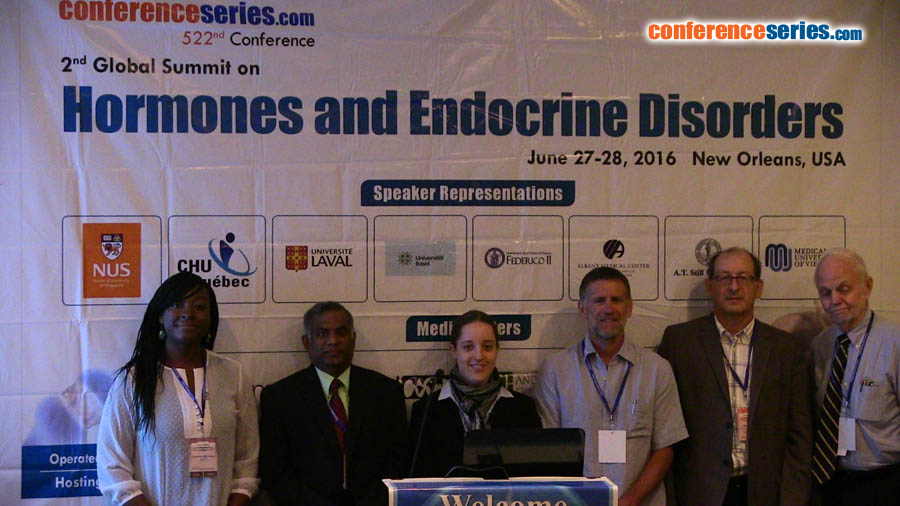
Paul J Davis
Albany Medical College, USA
Title: Anti-apoptotic and pro-angiogenic properties of thyroid hormone may oppose cancer chemotherapy
Biography
Biography: Paul J Davis
Abstract
The principal secretory product of the thyroid gland, L-thyroxine (T4), is anti-apoptotic at physiological concentrations in a number of cancer cell lines. Among the mechanisms of anti-apoptosis activated by the hormone is interference with the Ser-15 phosphorylation (activation) of p53 and with TNFα/Fas-induced apoptosis. The hormone also decreases cellular abundance and activation of proteolytic caspases and of BAX and causes increased expression of X-linked inhibitor of apoptosis (XIAP). The antiapoptoticrn effects of thyroid hormone largely are initiated at a cell surface thyroid hormone receptor on the extracellular domain of integrin αvβ3 that is amply expressed and activated in cancer cells. Tetraiodothyroacetic acid (tetrac) is a T4 derivative that, in a modelrnof resveratrol-induced p53-dependent apoptosis in glioma cells, blocks the anti-apoptotic action of thyroid hormone, permitting specific serine phosphorylation of p53 and apoptosis to proceed. In a nanoparticulate formulation limiting its action to αvβ3, tetrac modulates integrin-dependent effects on gene expression in human cancer cell lines that include stimulation of expression of apanel of pro-apoptotic genes and downregulated transcription of defensive anti-apoptotic XIAP and MCL1 genes. By a variety ofrnmechanisms, thyroid hormone (T4) acts as an endogenous anti-apoptotic factor that may oppose chemotherapy-induced apoptosis in αvβ3-expressing cancer cells. It is possible to oppose this anti-apoptotic activity pharmacologically by reducing circulating levels of T4 or by blocking effects of T4 that are initiated at αvβ3.




